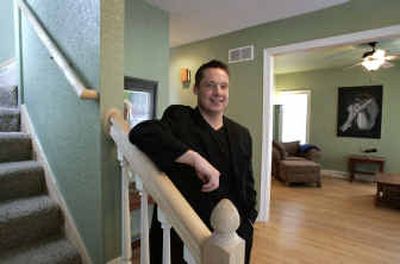It’s home sweet investment for young real estate buyers

Real estate may be Generation X’s pension plan.
Nearly one in four home sales last year – 1.8 million – were to investors, according to the National Association of Realtors. Some of these transactions reflect a new breed of buyers – 20- to 30-somethings seeking their fortunes through smart property investments. While people of all ages see real estate as a solid investment, interest is very intense among younger buyers, many of whom live in the houses they buy as they fix them up for eventual resale.
“To afford the things we want in life, we can’t invest in the stock market, can’t expect our company’s 401(k) will make it for us,” said Brett McPherson, a 30-year-old realty sales associate. “So we’re doing it ourselves.”
Two years ago, McPherson bought a water-damaged three- story home for $140,000 on Milwaukee’s east side, “a neighborhood I couldn’t otherwise afford.” He’s been rehabbing it ever since, and it’s his primary residence. Its current value: $400,000, he said.
“It’s probably taken 80 percent of my disposable income, and has meant no expensive vacations or $9 martinis, but I won’t have to struggle ever again to buy a house,” McPherson said. “Real estate makes sense. You know exactly where your dollars are, and it’s not a matter of fluctuating value.”
It sure isn’t. Average U.S. home prices have outpaced inflation for more than a decade and have soared 50 percent in the past five years, the Federal Deposit Insurance Corp. reported in February.
In many areas, Gen X property investors, born from roughly 1965 to 1982, typically gravitate to what Milwaukee Realtor Dave Schmidt Jr. calls “the cheaper end of the spectrum” – properties less than $150,000.
“They live in the place a few years, fix it up, then use the equity to buy another place,” Schmidt said.
These younger buyers aren’t entranced with traditional investments, having seen stocks plummet. “Real estate is their investment,” Schmidt said, “and low interest rates have made buying easier.”
Low interest rates and “a deal that fell into our lap” got Julie Lange, a 38-year-old actress, and her husband, Joe, a mechanical engineer, into the market. They built enough equity in three years on a south side Milwaukee duplex to finance a single-family home purchase last fall – and keep the duplex as an investment.
“The trick is finding what neighborhood will be on the upswing in the next five to 10 years,” Lange said. “Then, if you can get a property cheap, you can get a really good return.”
She and her husband already are contemplating their next deal. “I’ve lived in different pockets of the country – Manhattan, Fort Lauderdale – and it seems wherever I go, people have found investment properties a very good business. It has ended up supporting them later in life. And now, we have a foothold,” she said.
Today’s younger home buyers are willing, unlike those a few years ago, “to put a little sweat equity into their properties,” said Terry Donahue, president and co-owner of Prudential Absolute Realtors in Oconomowoc, Wis.
“They’re truly buying it for the investment, even though they’re living in it. Live in a place two years and you get the capital gains tax exclusion – $250,000 if you’re single, $500,000 if you’re married. So they stay two years, sell and take the appreciation, then roll over to the next deal,” she said.